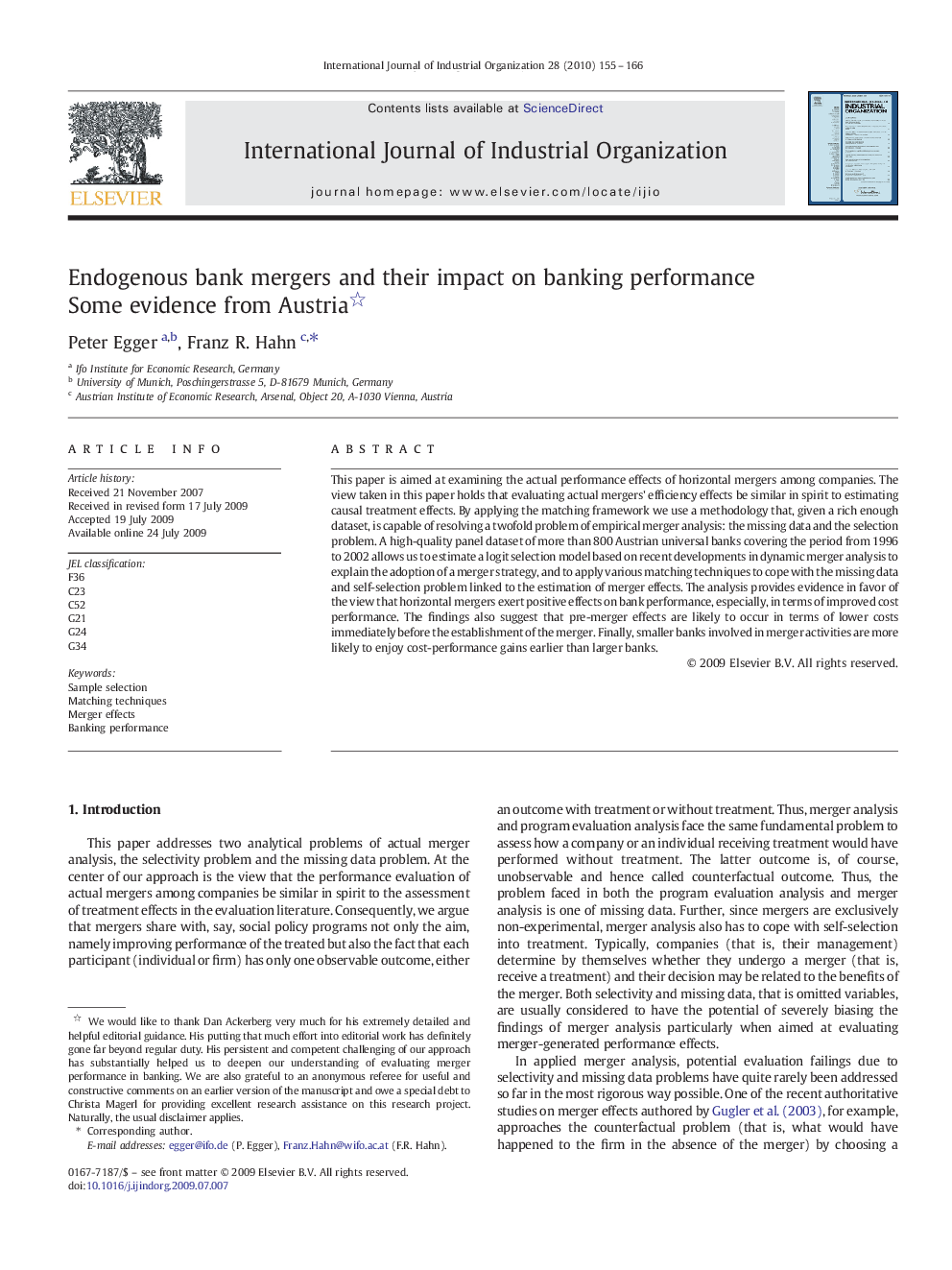| Article ID | Journal | Published Year | Pages | File Type |
|---|---|---|---|---|
| 5078458 | International Journal of Industrial Organization | 2010 | 12 Pages |
Abstract
This paper is aimed at examining the actual performance effects of horizontal mergers among companies. The view taken in this paper holds that evaluating actual mergers' efficiency effects be similar in spirit to estimating causal treatment effects. By applying the matching framework we use a methodology that, given a rich enough dataset, is capable of resolving a twofold problem of empirical merger analysis: the missing data and the selection problem. A high-quality panel dataset of more than 800 Austrian universal banks covering the period from 1996 to 2002 allows us to estimate a logit selection model based on recent developments in dynamic merger analysis to explain the adoption of a merger strategy, and to apply various matching techniques to cope with the missing data and self-selection problem linked to the estimation of merger effects. The analysis provides evidence in favor of the view that horizontal mergers exert positive effects on bank performance, especially, in terms of improved cost performance. The findings also suggest that pre-merger effects are likely to occur in terms of lower costs immediately before the establishment of the merger. Finally, smaller banks involved in merger activities are more likely to enjoy cost-performance gains earlier than larger banks.
Related Topics
Social Sciences and Humanities
Economics, Econometrics and Finance
Economics and Econometrics
Authors
Peter Egger, Franz R. Hahn,
